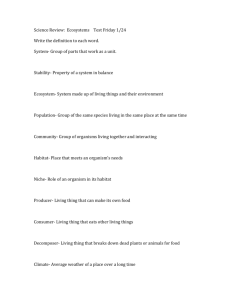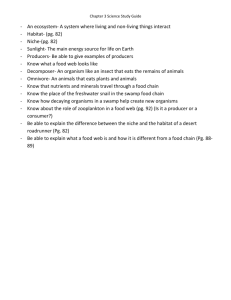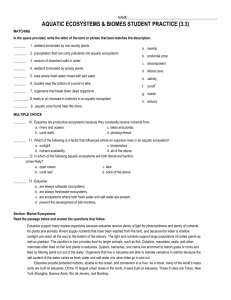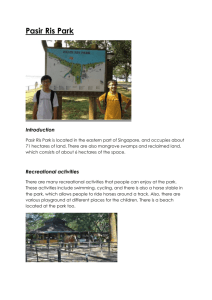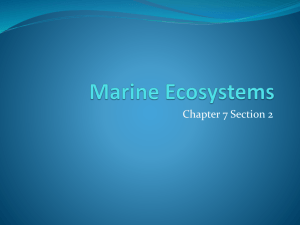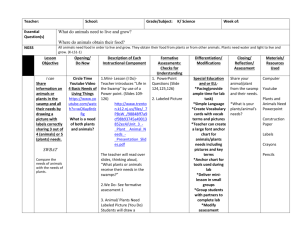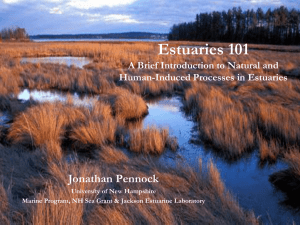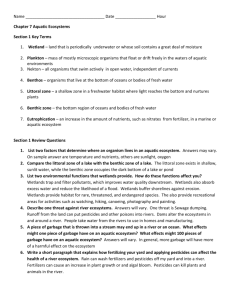Aquatic Ecosystems
advertisement
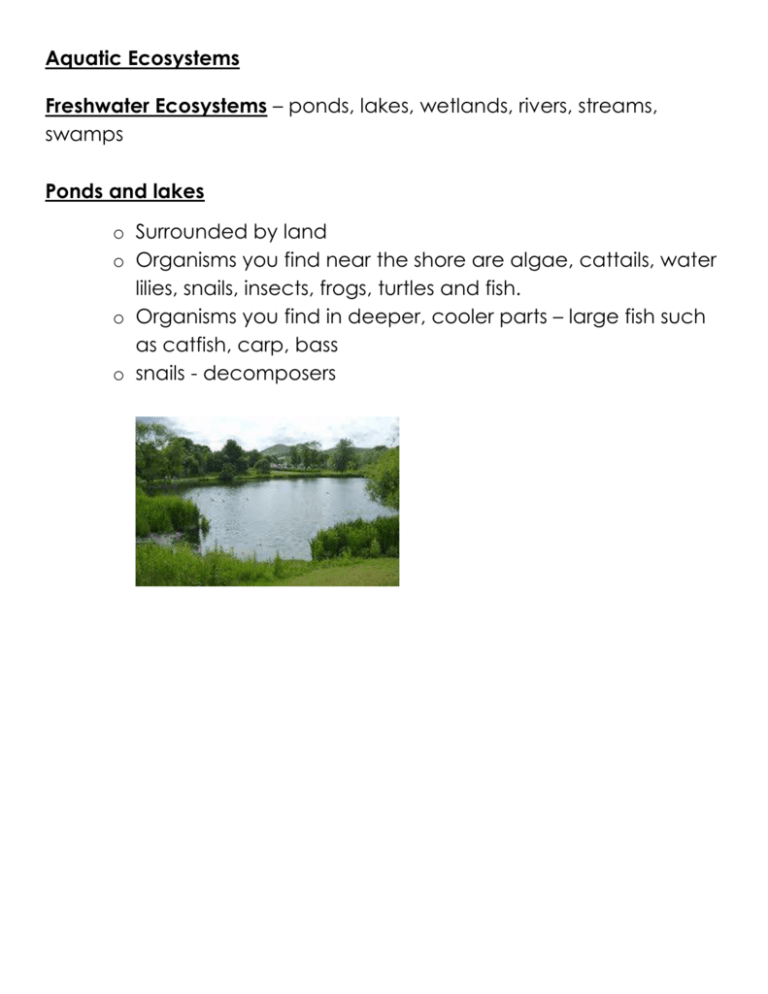
Aquatic Ecosystems Freshwater Ecosystems – ponds, lakes, wetlands, rivers, streams, swamps Ponds and lakes o Surrounded by land o Organisms you find near the shore are algae, cattails, water lilies, snails, insects, frogs, turtles and fish. o Organisms you find in deeper, cooler parts – large fish such as catfish, carp, bass o snails - decomposers Wetland – an area of land such as a marsh or swamp that is flooded with water at least part of the year Swamp o A wetland that is usually partly covered in water and is full of woody plants (shrubs and trees). o Often near rivers or streams. These rivers and streams sometimes flood, and the water from the flood carries nutrients to the swamp. Saltwater Ecosystems (marine ecosystems) – located mostly in coastal areas and in the open ocean - estuaries, salt marsh, mangrove swamp, coral reef Estuaries – an area in which fresh water from a river mixes with salt water from the ocean. Other names: bay, sound, lagoon, harbor o Water is brackish - mixture of freshwater and saltwater o Very nutrient rich ecosystem – great place for plants to grow o Estuaries help purify water, control floods from upstream, and buffer land from hurricanes o Located on the coast o Organisms that live in estuaries are shrimp, crabs, clams, reeds, grasses and turtles Salt Marshes – a low area that is subject to regular, but gentle tides. o Very grassy; no trees o Located on the coast Mangrove Swamps – coastal wetlands that have salt-tolerant trees and shrubs such as mangrove trees Coral reefs – o Built by animals called corals. o When corals die, they leave behind their shells. Over time, the leftover shells form a reef. o Found In shallow parts of the ocean that are very warm and receive plenty of sunlight.
